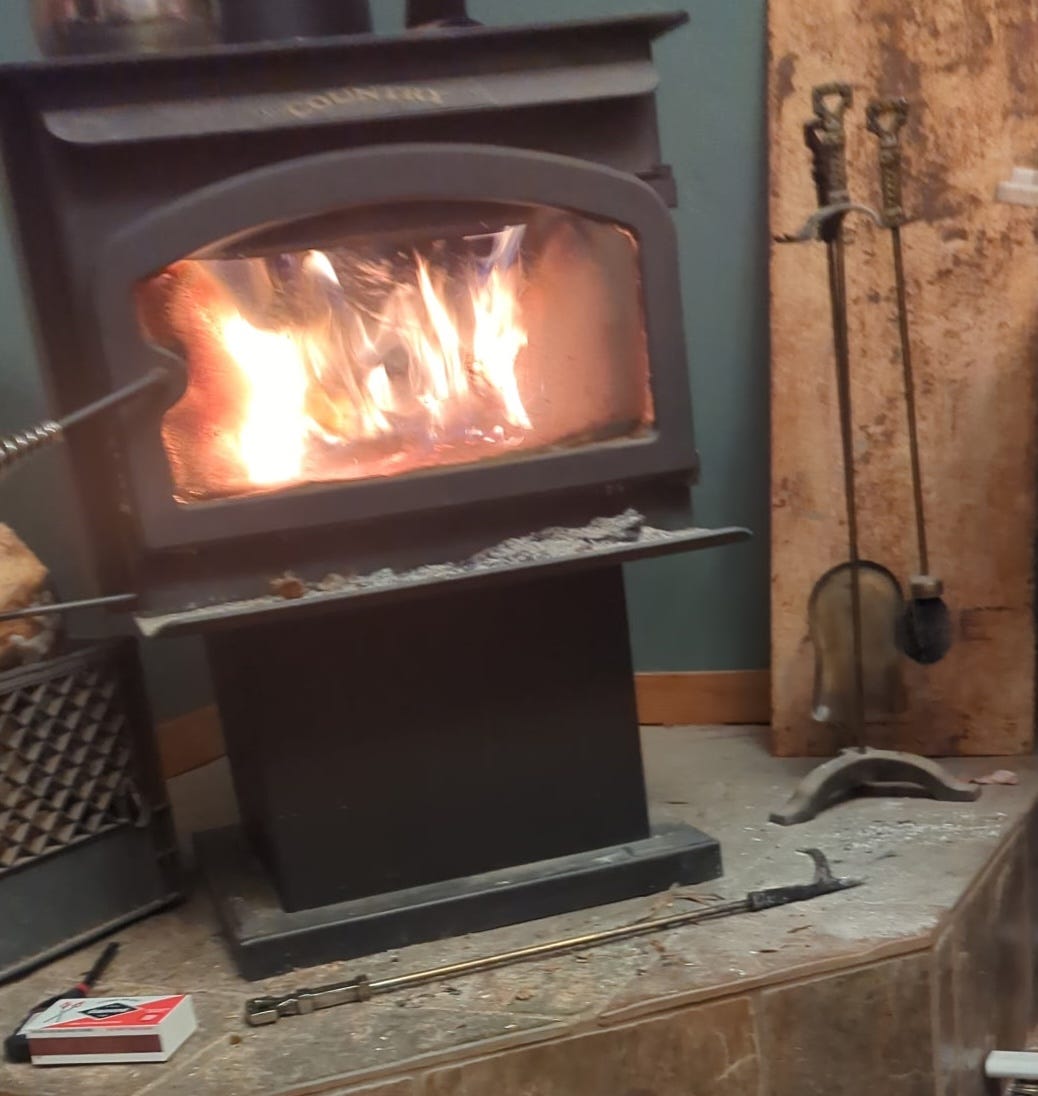Chopping Wood
That is all this post is about; how to use an axe to split logs.
My dad taught me how to chop wood. That does not mean I know the best way to chop wood, but I manage to do it and I enjoy doing it.
I need to chop wood to keep the house warm. It is not so urgent as some or as it has been at other times in my life; I have a heat pump but the efficiency will drop with the temperature. We have wood. I need to burn it. I need to chop it.
My dad did teach me, I remember some of that and I remember chopping wood so he must have taught me.
This is how I chop wood.
Place the edge of the axe on the target where you will strike it. Hold the handle with both hands, one on top of the other.
Fix your feet to the ground where they are. Do not move them until the wood has split.
Now pull the axe to you and hold it across your body, parallel with the earth horizon. Point the blade down to the center of the earth.
Your two hands are on the handle in opposing grips, the palm of the hand nearest the head cradling the handle and the hand nearest the butt gripping with the palm down.
It would be easier if we were together and I could show you.
You are going to put energy into moving the weight of the head up where a variety of forces come together to drive the axe head through the log.
Swing the head behind and up. The hand closer to the axe head will slide as you go, coming together with your other hand as you raise the axe above your head.
The head, where momentum is gathering, has come in a diagonal arc back and up then starting to move forward.
At the same time as this arc, arch your back. The weight of the axe head moving backwards will tell you how. Follow its pull. Take that energy from the axe head and load it into the structure of your back. Not too much. Do not force more than what the axe tells you to do.
Your hands are above your head now, together low on the handle. The axe is at the apex of its course, weightless because of the swing upwards you took it on, ready to gather energy from gravity. Your back is loaded with more energy. There is a pause at the point as the energy gathers. You and the axe are one consideration, on one plane, addressing the log.
Some of what happens now is automatic. the spring unwinding. Some, you have control over. Bring the axe forward with the strength of your back. Start this by pushing backward with your waist. You will feel the spring engage and drive forward. You will feel the gravity agree with the force you are introducing.
It is best to not think about the surface of the log as your target, but the heart
Now I have chopped wood for a couple winters and I have realized a couple things.
If the log shivers but does not split, if the axe leading edge buries itself in the wood but no fractures extend to the edges, you need to pull it out and strike again. And again and again. It will split. You will see a crack form on one strike, extending along the sawn face of wood. It will be like a child's drawing of lightning turning at the rings which mark the years that tree stood then turning again to the edge. The next strike or the one after that will deepen that crack and split through the log. Keep striking even if the first seems to have no effect.
You may have to move your stance to pull the axe out of the wood. Return and repeat.
This year, I realized something new to think about and bring to the axe head. After you have felt all that I just described a hundred times and understand that song, consider the relationship of your wrists. Consider if the handle is lower than the head when you strike the wood. If it is, you have left off some force available to you.
As your hands pass at nose level, break your wrists so that the high hand travels ahead of the low hand. The head is now speeding further and is lower than your hands. You have added the force of an additional arc to the head of the axe just as it enters the wood. More force increases the chance the wood will split apart to slices that fit into your stove’s firebox.
I will need to learn how to maintain this axe and I will perhaps use the heavier maul more. The head of the maul is slipping from the handle. I remember my father dealing with this by driving more steel wedges into the top where the handle wood slips into the head. He has told me this is re-hafting. I look forward to asking him how to do that.



